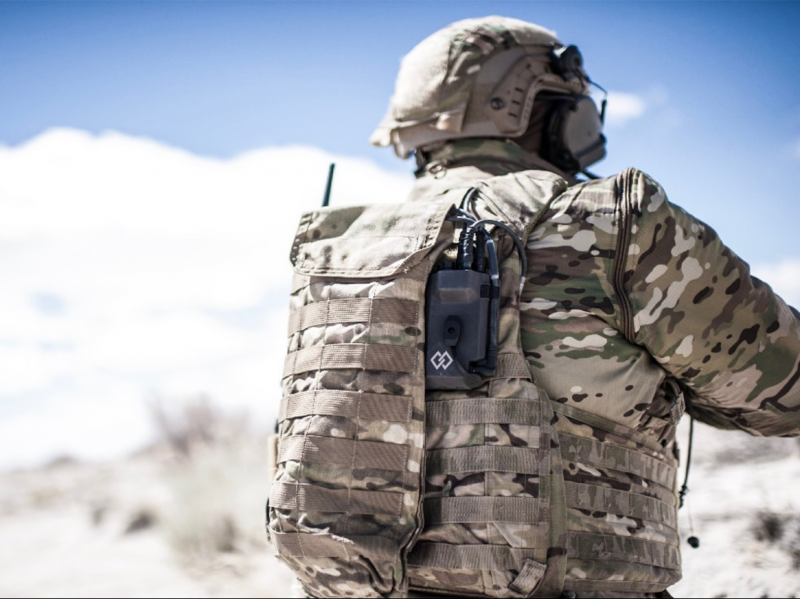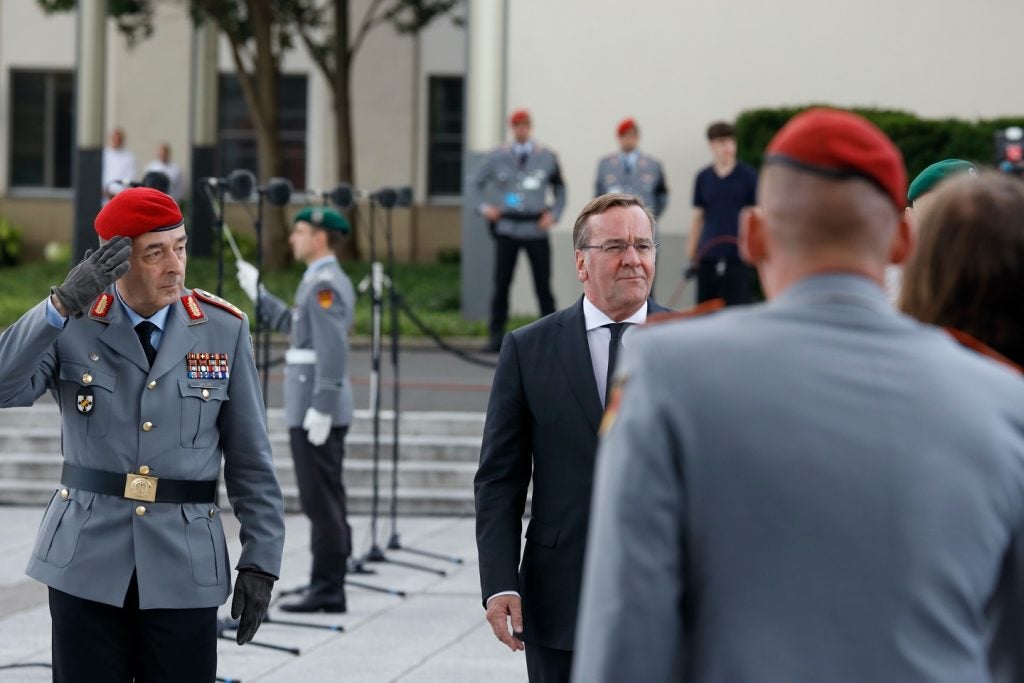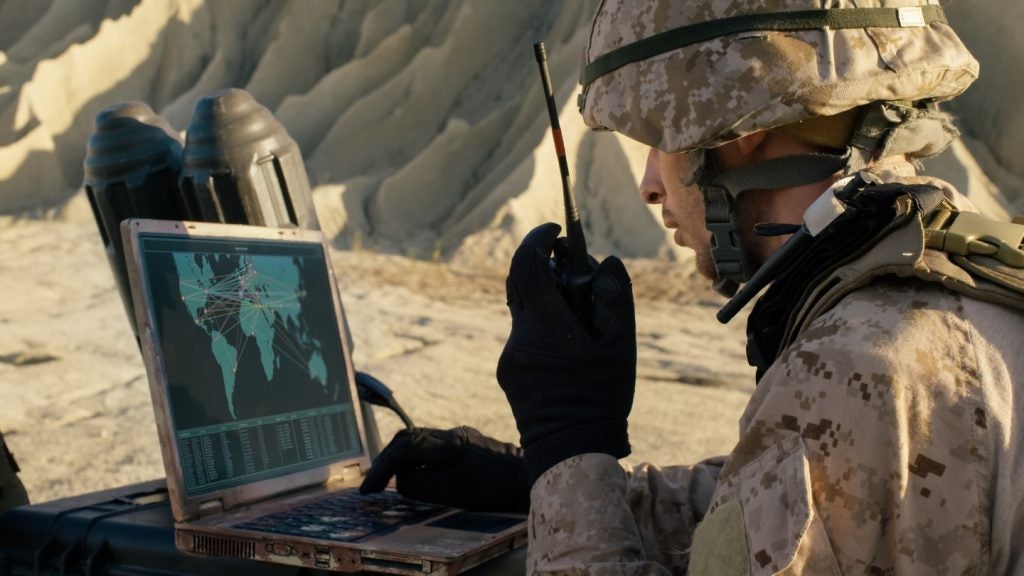
‘Flexibility is the only way to survive,’ explained Colonel Moises Serrano Martinez from the Spanish Ministry of Defence as he detailed his country’s approach to the future dismounted soldier system – known in Spain as SISCAP. In a world where technology is rapidly evolving, soldier technology needs to adapt rapidly to keep up with modern threats.
This idea of technology evolution was a key theme at the conference. Lieutenant Colonel Neil Locke, Commanding Officer of the British Army Infantry Trials and Development Unit (ITDU), spoke of the UK’s plans to improve the kit carried by British soldiers, which has seen little evolution in the past ten years.
The soldier as a system
Across the British, Spanish, Finnish and Swiss presentations at the conference, the core problem with soldier systems, and the solution to it, remained the same: communications and connectivity. This includes communicating with other soldiers, a robot or an unmanned system, as well as how all the aspects of a soldier’s kit interact with one another – from a laser range finder to the radio and the batteries that power the equipment.
The future soldier system can be seen as taking two strands: the wearable and the peripheral, that is, what a soldier physically carriers in gear, and what helps them achieve their mission. The British Army, in a collaboration of the ITDU and TommyWorks, aims to refine the soldier and the systems that support them.
A large part of the UK’s development of a new dismounted system is powered by the Army Transformation Fund, set up by former defence secretary Gavin Williamson. The idea was to create a pool of money allowing the three services could bid to buy novel equipment, test it and see what sticks. The challenge now is to work out and implement a structure to get all of it to work well together.
“With robotics, the focus is currently on load-bearing capabilities, but in future the army is looking to further equip them with a sensor and an effector.”
How well do you really know your competitors?
Access the most comprehensive Company Profiles on the market, powered by GlobalData. Save hours of research. Gain competitive edge.

Thank you!
Your download email will arrive shortly
Not ready to buy yet? Download a free sample
We are confident about the unique quality of our Company Profiles. However, we want you to make the most beneficial decision for your business, so we offer a free sample that you can download by submitting the below form
By GlobalData“The transformation fund provided us with a load of kit,” said Lieutenant Colonel Gareth Davies at the conference, adding that the challenge now is to get it to work together. The Army has six robotic platoon vehicles and four nano-UAS currently undergoing testing to see how they can best augment a soldier. With robotics, the focus is currently on load-bearing capabilities, but in the future the army is looking to further equip them with a sensor and an effector.
On the lower end of the spectrum, as a Thales representative explained at the conference, is the burden-sharing potential of connected soldiers, which includes everything from batteries to new concepts such as the ‘digital water bottle’, which allows a commander to keep track of a squad’s hydration, and to assess resources in longer missions.

The clearest vision of what the future soldier could look like was presented at the event by the UK with the 24-hour integrated digital soldier
Another consideration when designing the future soldier – or treating the soldier as a system – is one that has been known to designers of armoured vehicles for generations: the balance between armour and mobility. Representatives of the Finnish and Swiss militaries pointed out the ongoing dilemma between better armour or better mobility.
Major Marco Dâmaso of the Swiss Armed Forces explained that his country is looking to assess the potential of modular armour. If soldiers carry less armour they can move faster; however, they are also less protected against enemy fire. This trade-off, he explained, was a problem with older versions of Swiss body armour that was heavily focused on protection, meaning soldiers would often have to expose more of their body to get into a good fire position – in turn making the soldier more vulnerable.
In the Finnish Armed Forces, the current approach is to lighten the load and buy new skiing equipment for forces operating in northern areas. The country sees value in mobility, although this is more of a theory than a provable rule, the notion being that maneuverability will ultimately mean personnel can keep out of harm’s way.
Tidy wires make a difference
Power management remains another area of concern in soldier systems. Black Diamond Advanced Technology chief strategy officer Colonel (retired) Mike Lawrence, in his talk on power management and soldier systems, pointed out that cable management can often be just as important in increasing the efficiency of the soldier as a system as some of the more high-tech innovations.
To find out how their systems can be made easier for soldiers to carry, Black Diamond issued hundreds of surveys and took thousands of pictures of existing soldier communications gear to examine how it is used. The company then used this research to design its connectors, hubs, and batteries to fit the soldier, rather than get in the way – the idea being that systems worn by the soldier should never get in the way of the tactics they are trained to use.
Black Diamond’s system cuts down on the number of wires, hubs, connectors and batteries so that a soldier can keep their communications system assembled, lowering the need to prepare for deployment. At base the armour can be taken off and the system plugged in to charge, or when on operations the system can be charged from the cigarette lighter of an armoured vehicle.





